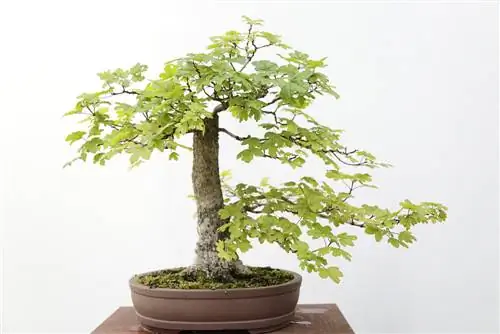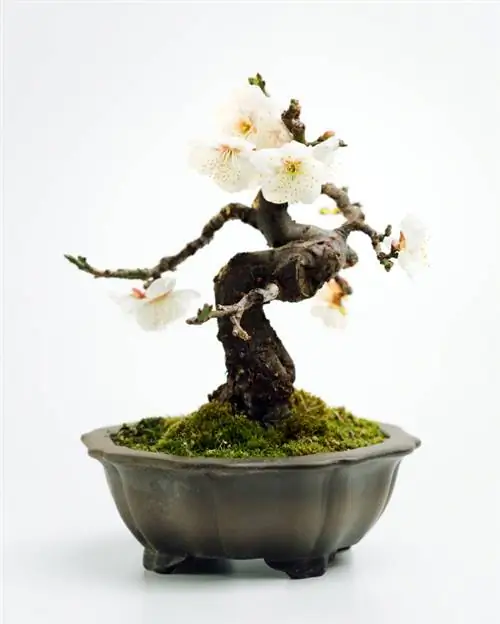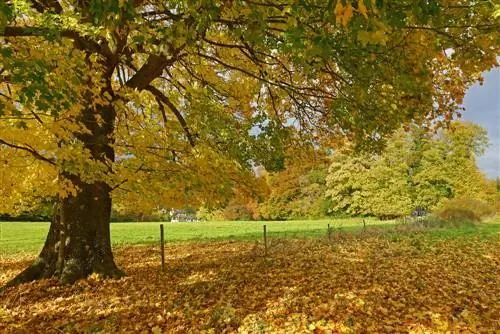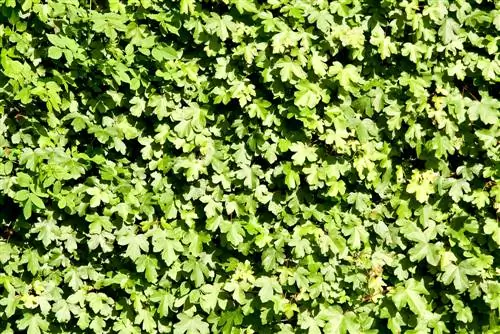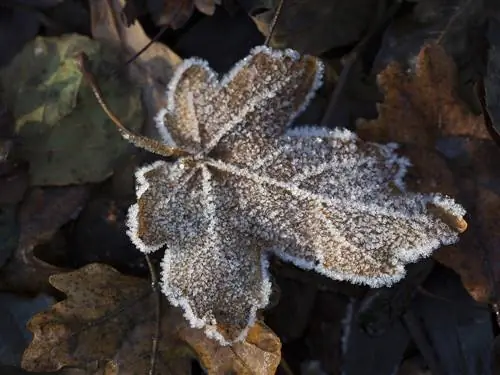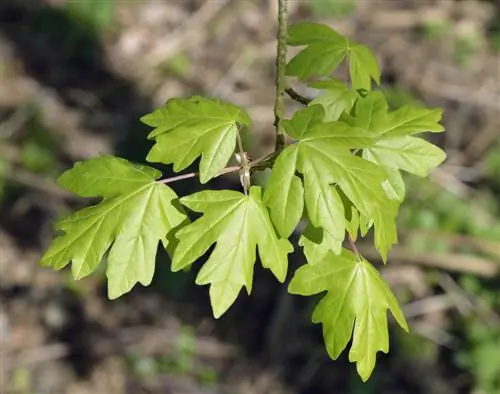- Author admin [email protected].
- Public 2023-12-16 16:46.
- Last modified 2025-06-01 06:02.
Decorative leaves, shapely growth and good-natured pruning tolerance make the field maple the perfect candidate for a magnificent outdoor bonsai. For many a beginner, the local maple species paved the way to the higher spheres of bonsai art. This guide gives tips for the right start and the best care for a field maple bonsai.
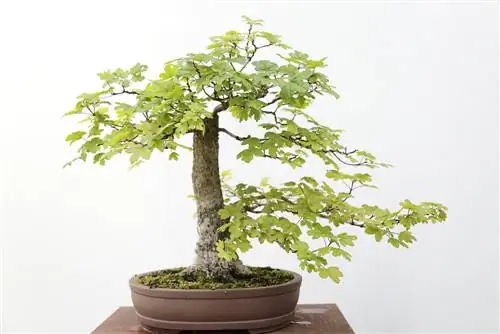
How do I properly care for a field maple bonsai?
For successful field maple bonsai care, you should choose a sunny to partially shaded location, water regularly, fertilize from April to September, cut branches and leaves and wire at the right time and repot if necessary. The frost hardiness allows overwintering outdoors or in bright, frost-free winter quarters.
Planting bonsai - tip for a quick start
The “quick bonsai” process has proven to be a time-saving start to a field maple as an outdoor bonsai. In contrast to growing from seeds, you have solid starting material available right from the start for a stylish structure. This is how it works:
- Choose a two- to three-year-old field maple with a shapely trunk and a vital root system
- Short the trunk to a height of 30 cm
- Dig up the boulder and pot it in a mix of Akadama, potting soil and perlite or lava granules
Since there are numerous field maple hedges in residential areas, there should be no shortage of suitable boulders for quick bonsai. Please ask the owner for permission before digging up a sapling.
Caring for field maple bonsai - How to do it right
The robust pruning tolerance allows almost all styles for a field maple bonsai. The most important key points in the care program are summarized in the following short instructions:
- Location: sunny to partially shaded, likes to be airy and without summer heat
- Watering: regularly, several times a day on hot summer days
- Fertilizing: from April to September every 14 days with liquid fertilizer (€4.00 on Amazon) or once with Osmocote fertilizer cones in April
- Cutting: branch cutting from January to February or in summer, leaf cutting and tweezing from July
- Wiring: from May for a maximum of 6 weeks so that the wire does not grow in
- Repotting: young bonsai annually, older specimens every 2 to 3 years
A frost hardiness of up to -40 degrees Celsius allows a field maple bonsai to overwinter outdoors. In the limited substrate volume of the bonsai pot, there is of course a risk that the roots will freeze. We therefore recommend planting older trees in the garden during the cold season, ideally under the protection of deciduous trees. For reasons of caution, overwinter a young field maple bonsai in frost-free, bright winter quarters.
Tip
Field maple thrives as a heartroot plant, which qualifies it for cultivation as a rock bonsai. For this purpose, a suitable stone is clamped under the roots and fixed with wire. One of the most striking styles of creative bonsai art is finished.

